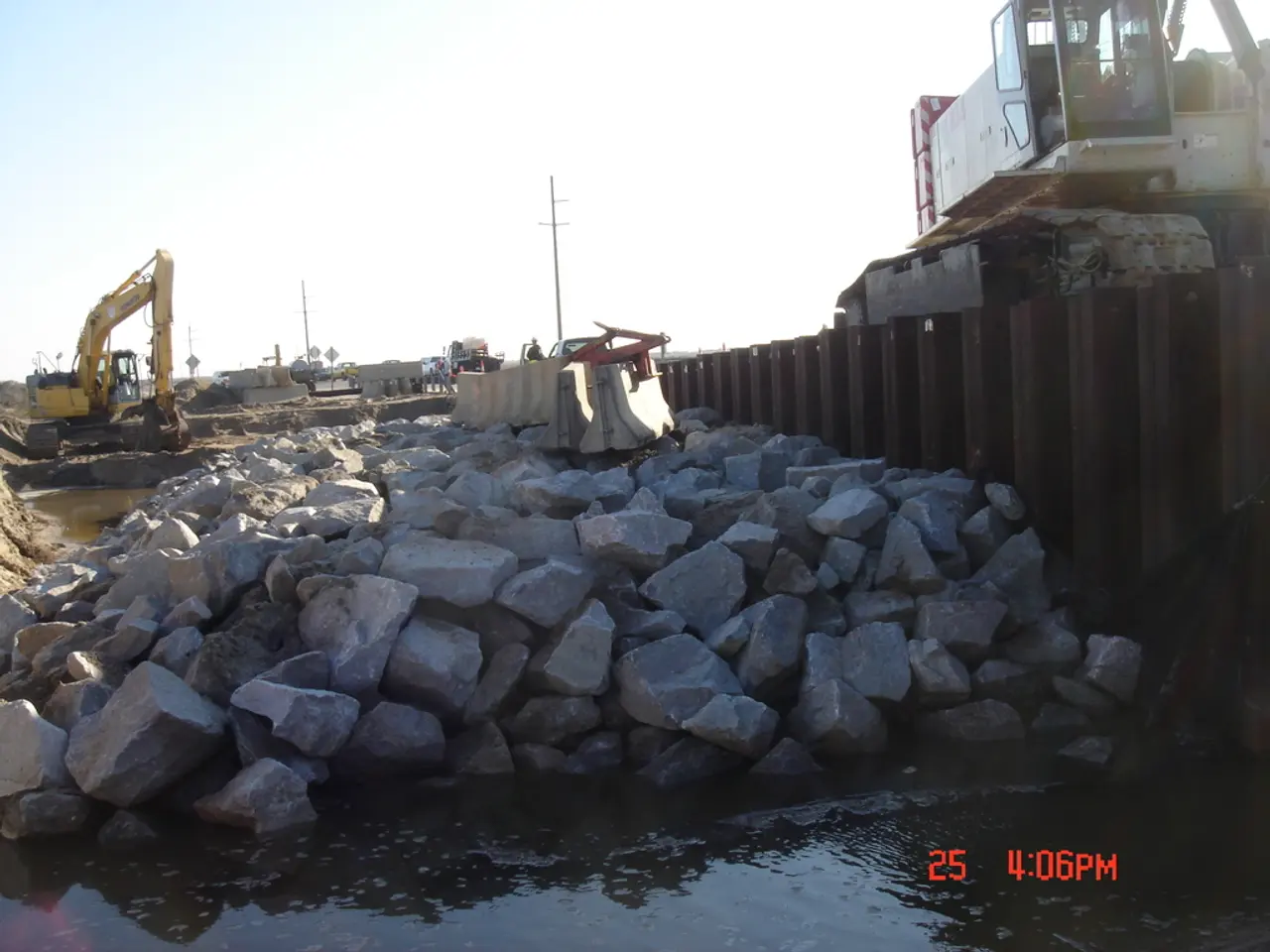Imminent Earthquake Prediction: San Andreas Fault Prepared for a Major Seismic Event According to Scripps Research
The southern section of the San Andreas Fault, stretching from northeast of San Diego to near Parkfield, California, is currently considered overdue for a major earthquake. This segment of the fault, which spans nearly 800 miles across western California, has not experienced a similar rupture in at least 300 years.
Research led by Yuri Fialko of the University of California, San Diego, indicates that the southern San Andreas Fault is stressed to a level sufficient for an earthquake of magnitude seven or greater. The fault is a right-lateral strike-slip fault, where the Pacific Plate moves past the North American Plate, and this movement occasionally gets stuck, causing stress to build up until it is released suddenly in an earthquake.
The region's proximity to densely populated areas, particularly Los Angeles, raises concerns about widespread destruction and casualties. Studies show that almost half of California’s faults, including the southern San Andreas, are overdue for earthquakes compared to their normal seismic cycle, increasing the likelihood that a major quake could happen soon.
Radar imaging from space reveals a 200-kilometer-long by 100-kilometer-wide displacement on the earth's surface across the Salton Sea area, providing clear evidence of the strain buildup that will ultimately result in a large earthquake along the southern San Andreas Fault.
The San Jacinto Fault, a lesser-known Southern California fault, is moving at roughly twice the speed of previous estimates, increasing its propensity for earthquakes. This fault, which intersects with the southern San Andreas Fault, has an even greater risk for a magnitude seven earthquake, which falls into the category of a major earthquake.
The National Science Foundation and the Southern California Earthquake Center supported Fialko's research for this study. Fialko found that the offshore faults such as the Oceanside, Rose Canyon, and Elsinore Faults are moving much more slowly than anticipated, reducing the earthquake threats from these faults for cities such as San Diego.
The fault slip rate, the pace of the plate movement at the fault, is estimated to be about an inch per year by Fialko. If all inferred deficit is released in a single event, it would result in a magnitude eight earthquake, roughly the size of the 1906 San Francisco earthquake.
This situation underscores the need for continued monitoring, improved preparedness, and public awareness of seismic hazards in Southern California. The southern San Andreas Fault is locked and accumulating strain, making a magnitude 7.8 or larger earthquake likely in the foreseeable future. Ground subsidence and sudden land shifts during a quake could be severe and rapid, with implications for infrastructure and coastal areas.
- Given the current situation of the southern San Andreas Fault, it's crucial to keep a close watch on medical-conditions related to earthquakes, such as injuries and mental health issues, that might arise due to a potential major earthquake.
- To combat the impending risk, educational workshops should be organized for the general public under education-and-self-development programs, emphasizing earthquake safety measures, first aid, and evacuation procedures.
- As technology advances, environmental-science researchers should develop smart devices for early detection and real-time reporting of earthquakes, which could assist in minimizing damage and casualties in sports stadiums and other popular sports venues in the region.
- Meanwhile, the finance sector could play a role in this disaster management by creating earthquake insurance plans tailored to the needs of the households, businesses, and industries in densely populated areas like Los Angeles, to minimize their financial losses after a disaster. Additionally, updates on general-news about earthquake preparedness and lifestyle changes related to earthquake safety could help alleviate public concerns.




